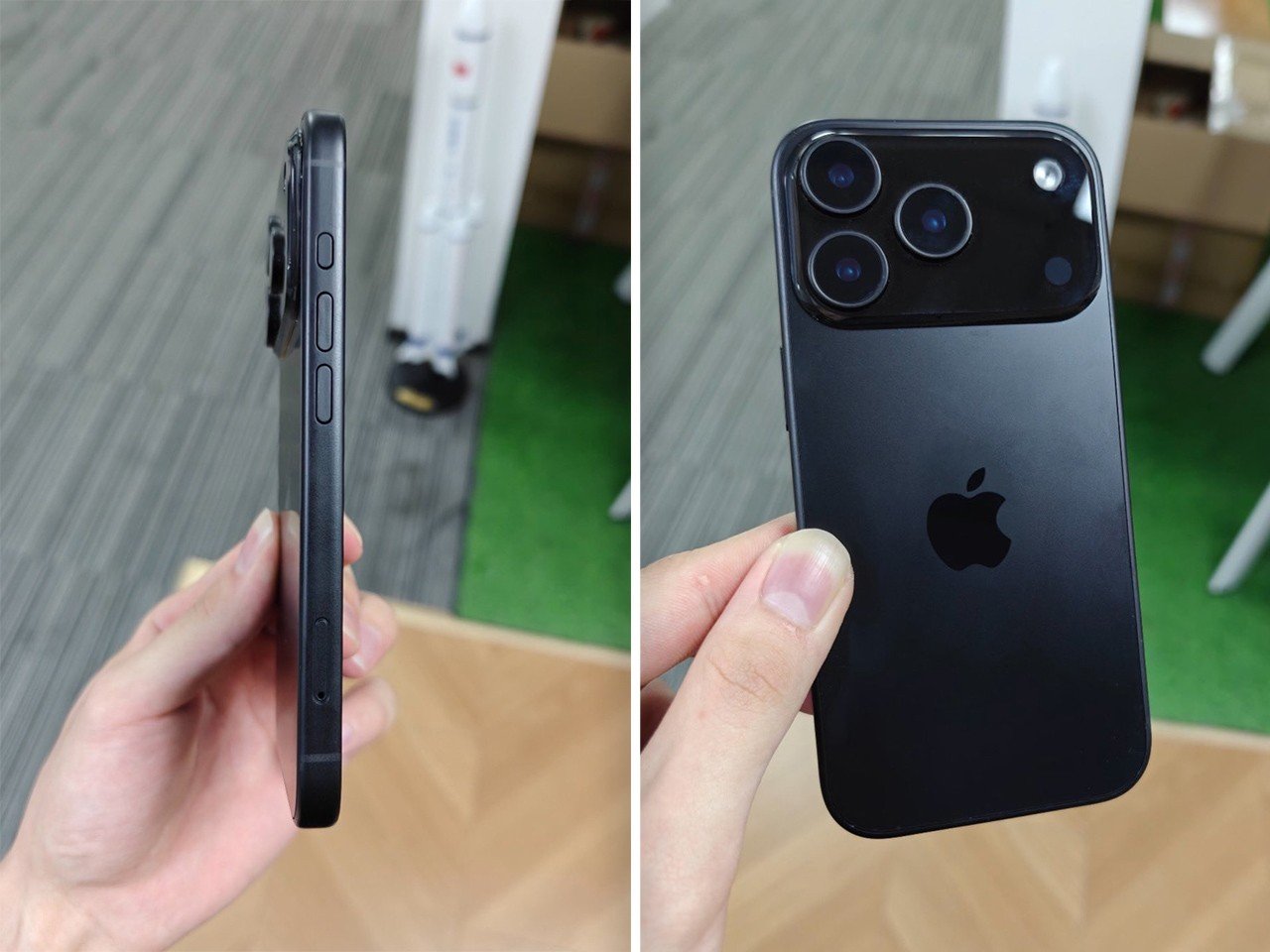We’re still months away from the iPhone 17‘s official debut, but leaked images on X are giving us our first real look at Apple’s next design evolution. The photos reveal something unexpected and utterly captivating: a convex, bubble-shaped camera bump that looks like it’s rising from the phone’s back panel like a droplet of water. This isn’t random. The curved glass aesthetic perfectly mirrors the “Liquid Glass” interface design Apple introduced with iOS 25 and expanded in iOS 26. The connection is unmistakable and deliberate.
Apple has always been meticulous about aligning hardware and software design languages, but this might be their most cohesive vision yet. The bubble-shaped camera island and softer frame edges create a visual and tactile extension of the operating system’s fluid transparency, rounded corners, and light-bending effects. It’s as if the digital bubbles we’ve been tapping on our screens for the past year are now physically manifesting in the hardware itself. The effect is both subtle and transformative, making the upcoming iPhone 17 look distinctly different from its predecessors while maintaining that unmistakable Apple identity.
Apple has played this hardware-software synchronization game before, and they’ve mastered it. Remember when iOS 7 introduced translucency and the iPhone 5c arrived with colorful, slightly translucent plastic backs? Or think back to the original iPhone, where the glossy screen blended seamlessly with the rounded black bezel, creating the illusion of content that floated on the surface. The company has always used this tag-team approach to create devices that feel complete and considered. The iPhone 17 continues this tradition, but takes it further by physically embodying the liquid glass metaphor that’s been central to iOS for two generations now.
The leaked images reveal how thoroughly Apple has committed to this aesthetic. The camera bump appears to be made from a single piece of glass that gently rises from the back panel, creating a smooth dome rather than the abrupt plateau we’ve seen on previous models. Light plays across this surface in fascinating ways, creating natural highlights and shadows as you tilt the phone. The frame edges have been softened too, abandoning the sharp industrial design of recent models for something more organic and inviting. Early manufacturing reports suggest this required entirely new glass forming techniques and specialized polishing methods to achieve the perfect curvature while maintaining durability. This will translate to a phone that feels noticeably different in hand, with the rounded edges nestling more comfortably against your palm and fingers. The overall effect makes the iPhone 17 look less like a technological tool and more like a polished river stone or piece of sea glass.
The color possibilities with this new design will be particularly stunning. Based on the white and graphite models shown in the leaks, we can expect the bubble camera to create gorgeous refractive effects in the rumored deep blue, sage green, and rose gold variants. Light will bend around the edges of the camera bump, creating subtle rainbow patterns and gradient effects that change as you move the phone. This plays perfectly with the liquid glass UI, where on-screen elements have similar light-bending properties. The visual harmony between what you see on screen and what you hold in your hand will be unprecedented. Apple has apparently achieved this with a new silky matte finish that resists fingerprints while enhancing the light-play across surfaces. The entire package will make the iPhone 17 look almost wet or fluid, despite being solid glass and metal.
This design direction strongly suggests Apple is laying groundwork for something even more ambitious. The so-called “Glasswing” iPhone, rumored for 2027 to mark the device’s 20th anniversary, is expected to feature an all-glass body with minimal visible seams. The iPhone 17’s bubble camera and rounded edges serve as a technological and psychological stepping stone toward that vision. Apple is gradually acclimating users to more organic, fluid hardware while simultaneously perfecting the manufacturing techniques needed for a seamless glass device.
The company always plays the long game, and what we’re seeing in these leaks is likely just the first visible phase of a multi-year design strategy culminating in the anniversary model. By the time 2027 arrives, the Glasswing’s radical glass body will feel like a natural evolution rather than a shocking departure, thanks to this careful priming. For a company obsessed with the interplay between hardware and software, the iPhone 17’s bubble camera represents Apple at its most cohesive. Your phone’s physical form will finally match the floating bubbles and liquid animations happening on your screen. The digital and physical worlds are merging, skeuomorphism is back – except, this time physical is copying digital… not the other way around.
The post Latest iPhone 17 Pro Leak Reveals A Striking ‘Liquid Glass’ Inspired Camera Bump first appeared on Yanko Design.

